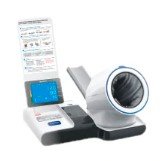Benefits of Interoperable Electronic Health Records on Patient Safety in Medical Labs and Phlebotomy Practices
Summary
- Interoperable Electronic Health Records improve patient safety by providing Healthcare Providers with comprehensive patient information.
- Efficient sharing of information between different healthcare facilities reduces the risk of errors in medical lab and phlebotomy procedures.
- Interoperable Electronic Health Records enhance patient care coordination and lead to better healthcare outcomes.
Introduction
In the United States, the implementation of interoperable Electronic Health Records (EHR) has had a significant impact on patient safety in the medical lab and phlebotomy field. Interoperability refers to the ability of different health information systems to communicate, exchange data, and use shared information effectively. In this blog post, we will explore the benefits of interoperable EHR systems on patient safety in medical labs and phlebotomy practices across the country.
Comprehensive Patient Information
One of the key benefits of interoperable EHR systems in the medical lab and phlebotomy field is the availability of comprehensive patient information. When Healthcare Providers have access to a patient's complete medical history, including lab Test Results, medication records, and other relevant data, they can make more informed decisions about the patient's care. This leads to better treatment outcomes and improved patient safety.
Benefits of Comprehensive Patient Information:
- Reduces the risk of medication errors by providing accurate information about the patient's current medications and allergies.
- Helps Healthcare Providers identify potential drug interactions or contraindications before ordering lab tests or prescribing medication.
- Ensures that lab Test Results are interpreted in the context of the patient's overall health status, leading to more accurate diagnoses and treatment plans.
Efficient Information Sharing
Interoperable EHR systems enable efficient sharing of patient information between different healthcare facilities and providers. This seamless exchange of data reduces the risk of errors in medical lab and phlebotomy procedures, such as mislabeling specimens or ordering unnecessary tests. When all relevant healthcare professionals have access to the same patient information, they can collaborate more effectively and coordinate care to ensure the best possible outcomes for the patient.
Improved Communication and Collaboration:
- Allows lab technicians to receive electronic orders for tests directly from Healthcare Providers, reducing the risk of errors associated with handwritten orders.
- Enables phlebotomists to access up-to-date patient information, such as recent lab Test Results, before drawing blood, helping them identify potential issues that may affect the collection process.
- Facilitates communication between healthcare teams, ensuring that all members are informed about the patient's current condition and treatment plan.
Patient Care Coordination
Interoperable EHR systems also enhance patient care coordination in the medical lab and phlebotomy field. When all Healthcare Providers involved in a patient's care have access to the same information, they can work together to develop a comprehensive treatment plan and monitor the patient's progress more effectively. This coordinated approach to care leads to better healthcare outcomes and improved patient safety.
Benefits of Patient Care Coordination:
- Reduces the likelihood of duplicate tests or procedures by ensuring that all Healthcare Providers have access to the same Test Results and treatment plans.
- Improves the accuracy of diagnoses by enabling Healthcare Providers to collaborate and share their expertise in interpreting lab Test Results and other diagnostic information.
- Enhances Patient Satisfaction by providing a seamless care experience and minimizing delays or confusion in the healthcare process.
Conclusion
Interoperable Electronic Health Records have had a positive impact on patient safety in the medical lab and phlebotomy field in the United States. By providing Healthcare Providers with comprehensive patient information, facilitating efficient information sharing, and enhancing patient care coordination, interoperable EHR systems have improved the quality of care and outcomes for patients across the country. As technology continues to advance, the benefits of interoperable EHR systems are likely to become even more pronounced, leading to further improvements in patient safety and healthcare delivery.

Disclaimer: The content provided on this blog is for informational purposes only, reflecting the personal opinions and insights of the author(s) on the topics. The information provided should not be used for diagnosing or treating a health problem or disease, and those seeking personal medical advice should consult with a licensed physician. Always seek the advice of your doctor or other qualified health provider regarding a medical condition. Never disregard professional medical advice or delay in seeking it because of something you have read on this website. If you think you may have a medical emergency, call 911 or go to the nearest emergency room immediately. No physician-patient relationship is created by this web site or its use. No contributors to this web site make any representations, express or implied, with respect to the information provided herein or to its use. While we strive to share accurate and up-to-date information, we cannot guarantee the completeness, reliability, or accuracy of the content. The blog may also include links to external websites and resources for the convenience of our readers. Please note that linking to other sites does not imply endorsement of their content, practices, or services by us. Readers should use their discretion and judgment while exploring any external links and resources mentioned on this blog.
